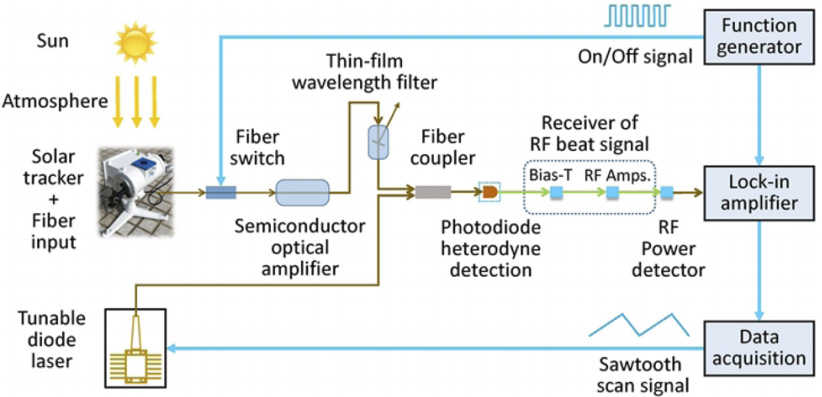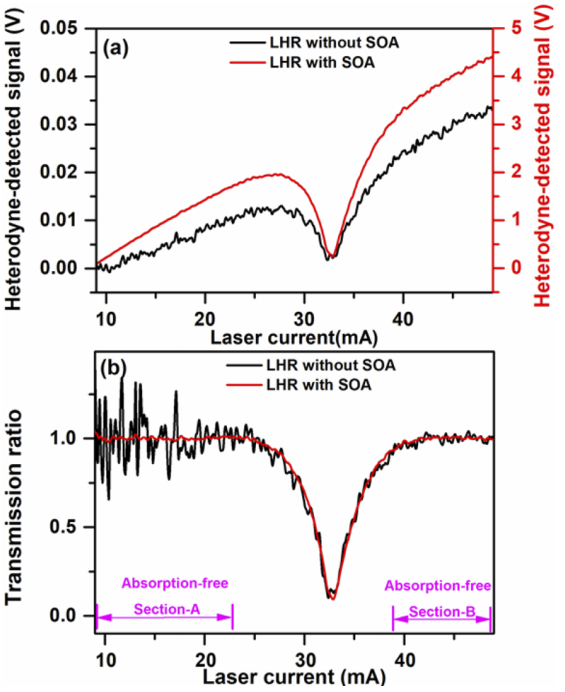
Recently, a research team led by associate Prof. XU Zhenyu from Hefei Institutes of Physical Science, Chinese Academy of Sciences suggested a new method to detect atmospheric greenhouse gas column with high-resolution laser heterodyne spectroscopy.
The method, which was in Optics Letter and highlighted as an Editor's Pick, solved the challenge of the increase of the collected effective radiation power limited by the restricted solid angle as described by optical antenna theory.
In the past years, Laser Heterodyne Spectrometer (LHS) was taken as a complementary tool to ground-based Fourier transform spectrometer in terms of the greenhouse gas column measurement, due to its high spectral resolution, small size and easy integration. However, for laser heterodyne spectroscopy, the signal-to-noise ratio (SNR) of heterodyne signal couldn't be enhanced by increasing the size of the optical receiver because of the optical antenna theory resulting in a limitation of the effective collected solar radiation power.
This would further limit the measurement accuracy of the greenhouse column abundances/vertical profiles.
The novel method proposed in this research improved LHS's SNR by utilizing a semiconductor optical amplifier (SOA) to resolve the issue with limited SNR induced by the optical antenna theory.
The research results showed that the precision of the greenhouse column measurement and the ability of weak light signal detection in terms of the developed SOA-assisted LHS, have achieved a great improvement compared to the traditional LHS.
This research work enhanced the performance of LHS, which showed great potential in the remote sensing of the atmospheric greenhouse gases.
"Our work improved SNR and the measurement precision of CO2 column abundance significantly. It would be promoted to mid-infrared LHR for high-resolution sensitive detection of atmospheric column or vertical profiles of more gas components," said DENG Hao, first author of this paper.
The research was funded by the National Natural Science Foundation of China, the National Key Research and Development Program and other projects.

Schematic diagram of the developed SOA assisted LHS. (Image by XU Zhenyu)

Atmospheric CO2 heterodyne signals obtained by SOA-assisted LHS and traditional LHS, respectively. (Image by XU Zhenyu)